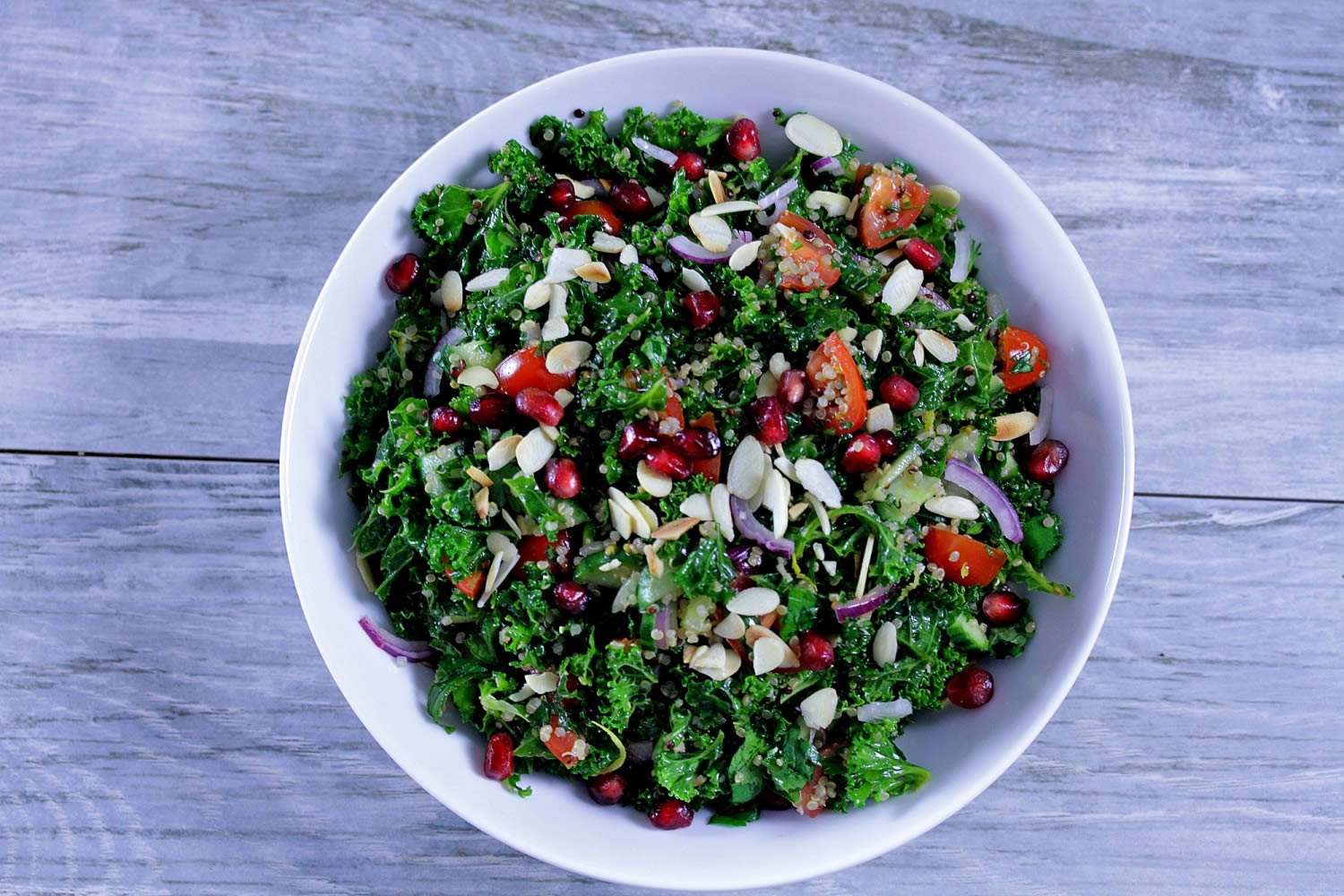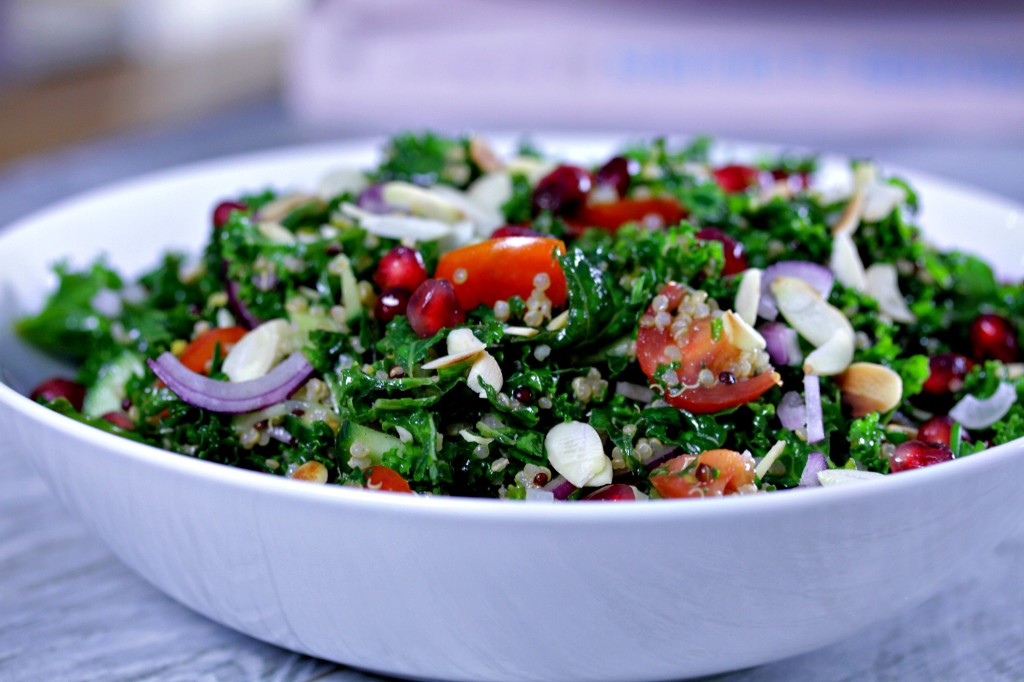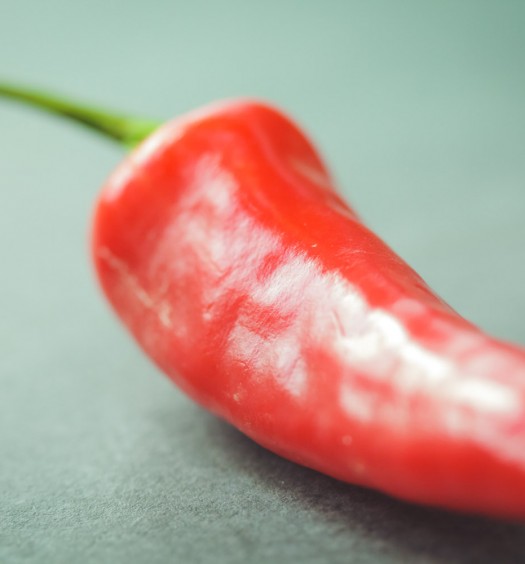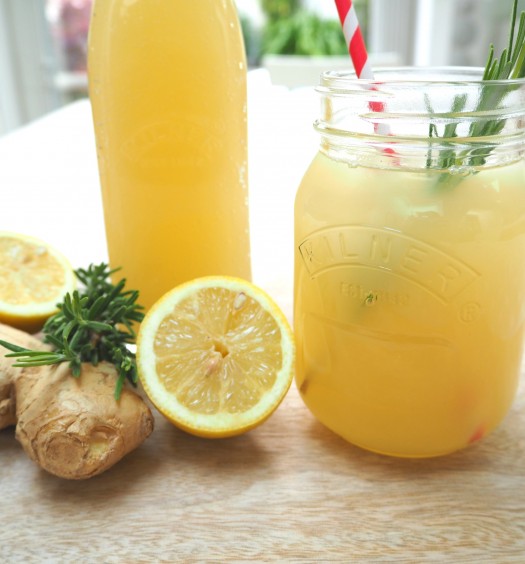I specifically chose the ingredients in this recipe to help cleanse my body of the congestion and stagnation we can feel in winter. Things like fresh coriander for detoxification (spring is the best time for a cleanse – literally a spring clean of the body), pomegranates for glowing skin and a healthy heart and quinoa for a good source of protein and antioxidants but the star of the dish has to be kale.
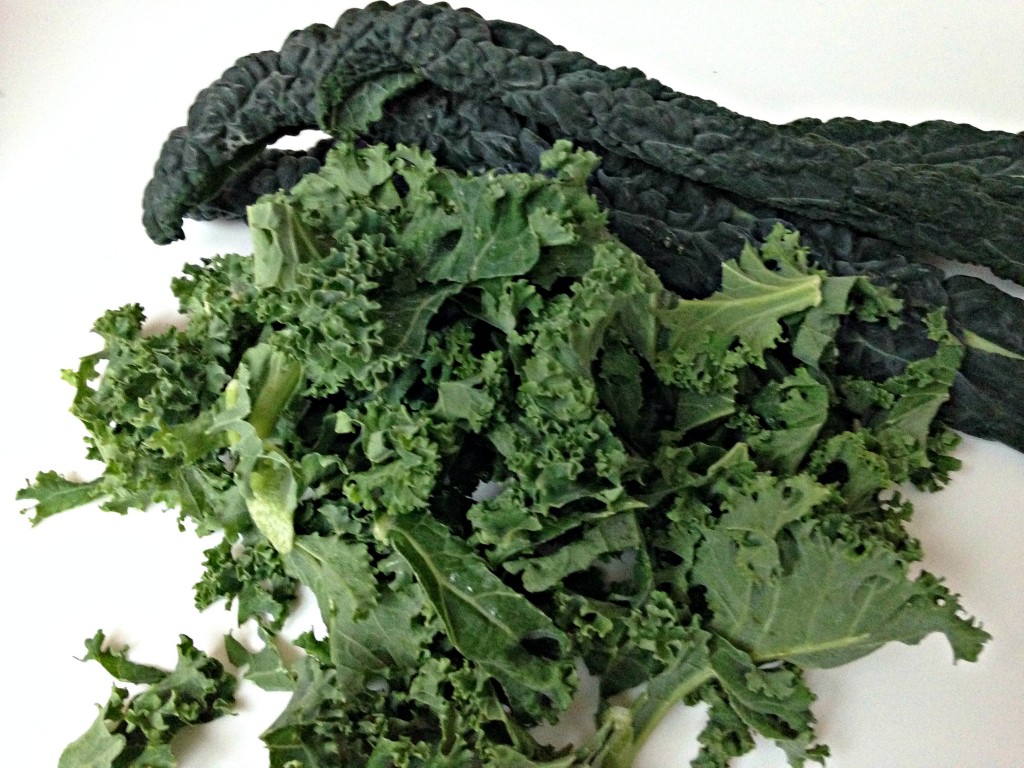
Kale has been called the most nutrient dense vegetable on the planet. I count it as a ‘super-food’ being so high in nutrients, including those often lacking in vegetarian diets such as iron. And did you know that kale is also higher than any fruit for vitamin C content per portion? Being from the cruciferous family it’s especially good for women as it helps control oestrogen levels so is really useful for things like PMS, PCOS, cysts, acne and prevention of hormonal-related cancers (breast, prostate and ovarian).
Kale isn’t high on most people’s top salad ingredients. Its high fibre content means it can be tough, coarse and a hassle to chew. On top of that it can be bitter and overpowering. But, after a couple of minutes of massage, it softens yielding a wonderfully vibrant, soft leaf that is totally transformed from its bitter former self. Trust me, massaged kale works really well in all salads and keeps in the fridge for days. Instead of enduring it because it’s good for you it actually becomes enjoyable.
When kale is massaged, its cellulose structure breaks down and wilts, so the leaves that were once tough and fibrous become silky. Essentially you’re making it easier to digest. The massage itself is simple. Once you wash and de-stem the kale, add a little olive oil and lemon and start rubbing the leaves together. After a couple minutes the kale should have reduced in volume by over half and the leaves become a deep green. Alternatively, place the kale in a plastic food bag and bash it a bit with your fists or a rolling pin, this keeps your hands clean and is surprisingly satisfying.
This salad works well on its own, being a good source of protein from the quinoa and almonds and rich in a diverse array of nutrients.
- 1/2 bag kale
- 2 cups cooked quinoa
- 1 cup cherry tomatoes
- 2 cups cucumber cut into small slices
- 1 cup parsley
- 1 cup mint
- 1 red onion
- 2 tbsp flaked almonds
- 1 cup pomegranate seeds
- 5 tbsp olive oil
- 1 clove garlic
- 1/2 tsp cayenne pepper
- 1/2 tsp ground cumin
- 1/4 tsp cinnamon
- 1 lemon juice and zest
- Cook the quinoa according to the instructions (or buy ready to use quinoa in a bag)
- Remove the stems from the kale and break up the leaves. Add two tablespoons of oil to the kale and either massage firmly with your hands, or place in a plastic food bag and knead until the kale has reduced in size by half and is vibrant green.
- Finely chop the onions, tomatoes, cucumber and herbs. Mix with the kale and quinoa.
- In a small frying pan, heat the flaked almonds until toasted.
- In a small bowl, combine 3 tbsp of olive oil with the crushed garlic, cinnamon, cayenne pepper cumin and juice and zest of the lemon. Mix well and pour over the tabbouleh.
- Stir well and add the almonds and pomegranates.
This tabbouleh is perfect for a light lunch with some sliced avocado, with meats or fish for dinner, as part of a mezze with hummus, olives, veg sticks and pitta bread, or wrapped in nori sheets as a take on veg sushi. It is also the perfect accompaniment to our homemade falafel. I hope you enjoy it and find new ways to incorporate raw kale into your salads.
We hope you love this salad as much as we do. Let us know how you get on in the comments below or on our facebook page and don’t forget to sign up to our newsletter to receive more recipes, nutrition tips and expert advice.

